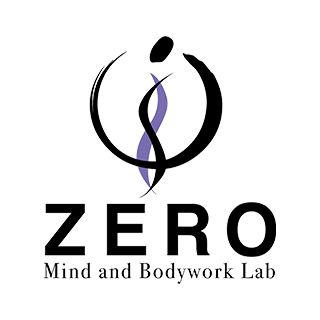はじめに
Hello, I’m Hidefumi Otsuka, offering Rolfing sessions in Shibuya, Tokyo.
Since April 8, 2025, I have been participating in the Advanced Training (AT) organized by the Japan Rolfing Association in Ichigaya, Tokyo, with instructors Ray McCall and Hiroyoshi Tahata. Today, we completed the third day. On this third day, we practiced sessions with each other.

Specifically, we performed one session from the three-session series based on Tahata’s Yield approach (I will introduce Tahata’s method, including his ideas on HARA and neutrality, in my next post).
In the previous post, I touched on Jeff Maitland’s “Three Questions,” and discussed how important it is to consider our way of being — our mindset and perception — when approaching a session.
Among these ways of being, what Ray repeatedly emphasizes is the importance of being Neutral.
However, it’s not simply about “being neutral.”
First, we must focus on:
“Trusting that the client’s body is self-organizing.”
In other words, believing in the client’s innate capacity for self-regulation becomes the foundation for building a safe and secure relationship.
This belief allows us to engage in non-verbal communication and better listen to what is happening within the client’s body.
This kind of preparation is necessary before truly understanding the meaning of neutrality.
Now, based on this preparation, why is becoming neutral so important?
In this post, I will explain by looking at the concepts of INTENTION and INTENTIONALITY, and how they relate to the outcomes of Developmental and Fruitional changes.
Becoming Neutral — From Average to Individual Uniqueness
In Basic Training (BT), we learned to follow the sequence of the Ten Series step-by-step.
(Ray refers to this as the Formulaic approach.)
In contrast, in the AT, we are learning how to recognize the differences among individual clients and how to offer sessions that are tailored to each one.
It is said that Dr. Ida Rolf, the founder of Rolfing, used to emphasize the importance of training one’s way of seeing the body, and that it takes at least five years of practice to truly internalize this skill.
In other words, BT focuses on cultivating the foundational ability to “see” the body.
Through this training, practitioners first master how to work with the “average” human body using various techniques.
Once this view of the body is established, and the practitioner learns the underlying principles, they can move to the next stage — providing sessions tailored to the uniqueness of each client.
The key to shifting from an “average” way of seeing to an individualized, unique way of seeing lies in the concept of Neutrality.
Difference Between Intention and Intentionality — How We Perceive?
Ray spends a lot of time explaining neutrality, starting with the distinction between Intention and Intentionality — two fundamentally different modes of perception.
What Is Intention?
When using Intention, the practitioner:
- Has a clear internal goal or plan.
- Believes they understand “what is happening in the body.”
- Stands in a position where “the practitioner knows better than the client.”
- Tries to explain all changes through cause-and-effect reasoning.
What Is Intentionality?
On the other hand, Intentionality is a concept originating from phenomenology, a philosophical tradition founded by Edmund Husserl.
Phenomenology is a philosophical approach that questions the very structure of consciousness itself.
According to phenomenology:
- Consciousness always involves a relationship between the subject (practitioner; called Noesis) and the object(client; called Noema).
- Our awareness is always directed toward something;
thus, there is an inseparable “relational structure” (called “intentionality”) between the subject and object.
Understanding intentionality deepens our grasp of phenomenology, because:
- Consciousness (practitioner) is always about something (client).
- When perceiving, we are giving meaning to the object (the client).
- The object (client) appears through subjective bodily experience.
Applied to Rolfing, becoming aware of our “intentionality toward the client’s body” opens the potential for profound, transformative outcomes beyond merely technical procedures.
From the perspective of intentionality:
We acknowledge that change cannot always be explained by simple cause-and-effect, but that necessary changes can naturally emerge.
We recognize that the client’s body can self-organize.
We assume that the client is wiser than the practitioner.
Summary Table: Intention vs. Intentionality
| Item | Intention | Intentionality |
|---|---|---|
| Fundamental Question | Practitioner-centered | Client-centered |
| Whose Wisdom? | Practitioner knows better | Client knows better |
| Nature of Change | Linear, Developmental, Causal | Non-linear, Fruitional, Process-based |
| How Change Progresses | Step-by-step | Emergent and creative |
| Approach | Technique-based, skill-driven | Relationship-based, experience-driven |
| Mode of Perception | Scientific, analytical | Phenomenological, perceptual |
Developmental vs. Fruitional Change
Approaching a session with intention tends to produce developmental (step-by-step) changes.
In contrast, approaching with intentionality fosters fruitional (emergent, creative) changes.
What Is Developmental Change?
Developmental change is:
- Western, linear, and can be explained through cause-and-effect.
- Problem-solving: addressing specific issues with targeted solutions.
- Practitioner-driven: the practitioner is the Agent of Change.
- Technique-focused: results depend heavily on the practitioner’s skill.
- However, it can lead to an endless cycle of new problems arising after old ones are solved.
What Is Fruitional Change?
Fruitional change is:
- Eastern in spirit, process-oriented, non-linear.
- Not easily explained by cause-and-effect.
- The practitioner listens to the client’s body and follows it.
- The practitioner acts as an Agent of Presence, supporting the space where natural transformation can happen.
This approach requires a mindset that:
“What needs to happen will happen.”
It demands a balance between:
- Letting Happen (allowing change to occur naturally)
- Making Things Happen (forcing change through intervention)
Thus, maintaining a neutral mindset is crucial.
Summary Table: Developmental vs. Fruitional
| Item | Developmental Change | Fruitional Change |
|---|---|---|
| Underlying Attitude | Intention | Intentionality |
| Approach Characteristics | Procedural, structural, causally explainable | Improvisational, process-based, allowing unexpected changes |
| Who Leads? | Practitioner (knowledge-driven) | Client (body wisdom) |
| Practitioner’s Role | Making things happen (Agent of Change) | Letting change happen (Agent of Presence) |
Fruitional Change and Neutrality
In order to truly offer sessions tailored to each individual,
we must embrace intentionality and foster fruitional changes by surrendering to the client’s own self-regulation process.
For that, the practitioner needs a neutral mindset.
When the practitioner embodies neutrality, they can:
- Maintain appropriate distance from the client,
- Recognize that each client must undergo their own unique process,
- And ultimately support the client in expressing themselves in a way that is true to who they are, leading to profound transformations.
Next time, I will explore what kind of inner state leads to neutrality, focusing on the concept of HARA (the abdominal center).
Conclusion
In this post, I summarized two different ways of perceiving, Intention and Intentionality, based on what I learned during AT — essential concepts for offering sessions tailored to each individual.
I explained that:
- Working with intention tends to produce developmental (step-by-step) changes.
- Working with intentionality fosters fruitional (creative, emergent) changes by surrendering to the client’s process.
Finally, I wrote about how fruitional change and a neutral mindset are essential for offering truly individualized sessions.

